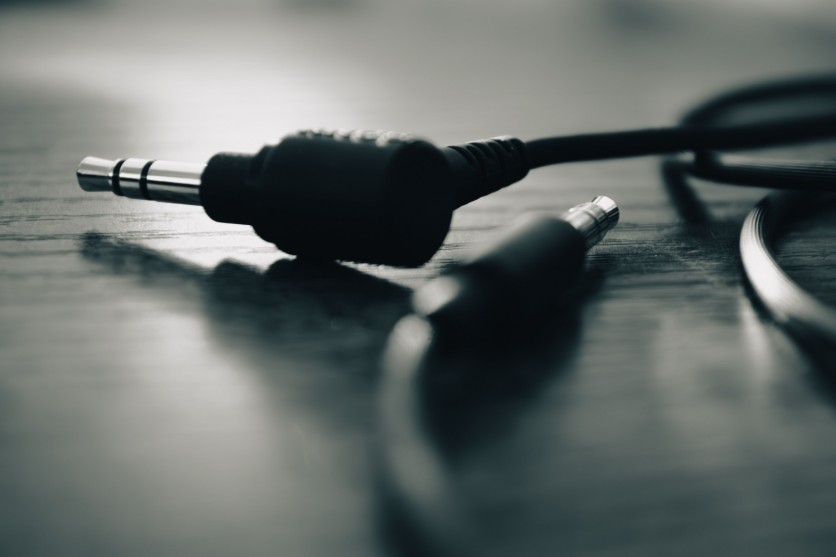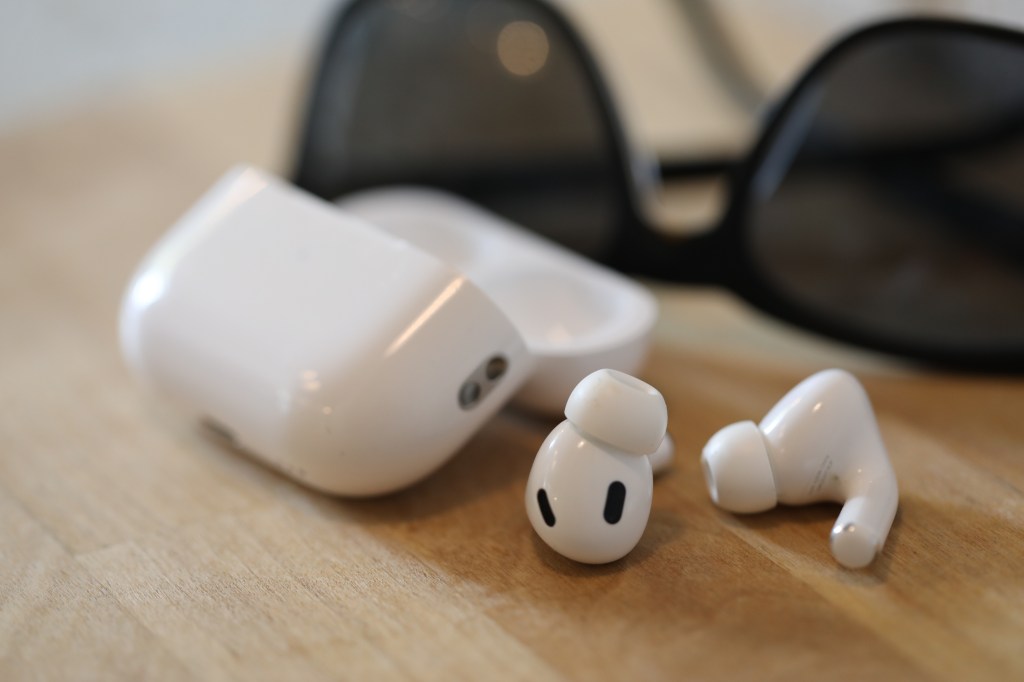Apple has always been at the forefront of innovation, pushing boundaries and changing the way we interact with technology. However, as with every innovation, there are sacrifices. One of the most controversial changes Apple made in recent years was the removal of the 3.5mm headphone jack from the iPhone 7, a move that sparked outrage and was met with harsh criticism. The decision, famously defended by Phil Schiller’s “courage” speech, marked the beginning of a shift in how we think about audio connectivity. Fast forward to today, and it seems that Apple has officially closed the chapter on one of its most polarizing products—the Lightning-to-3.5mm adapter. This shift marks the end of an era for both Apple and the broader tech industry, as we bid farewell to the last vestige of the beloved headphone jack.
Here's ads banner inside a post

The Adapter That Tried to Soften the Blow
When Apple made the controversial decision to remove the 3.5mm headphone jack in 2016, the backlash was swift and intense. Consumers were upset, feeling like they were being forced to embrace wireless technology, which was still in its infancy at the time. To ease the transition, Apple included a small, yet important, accessory in the box with every new iPhone—the Lightning-to-3.5mm adapter. This tiny dongle allowed users to continue using their wired headphones, even if they didn’t have the latest wireless options.

Here's ads banner inside a post
At the time, the Lightning-to-3.5mm adapter seemed like a temporary solution to calm consumers while Apple quietly pushed the wireless revolution forward. It worked, but just barely. Wireless earbuds were expensive, the sound quality of Bluetooth headphones wasn’t quite up to par with wired alternatives, and people weren’t ready to completely abandon the 3.5mm jack just yet. The adapter gave people an out, allowing them to continue using their old headphones without much hassle.
However, over the years, the adapter slowly faded into the background. With the launch of AirPods and the widespread acceptance of Bluetooth audio, the need for the adapter became less urgent. Today, nearly all smartphone manufacturers, including Android giants like Samsung, have adopted the same strategy, making the 3.5mm port a relic of the past.

Here's ads banner inside a post
The Transition to Wireless and USB-C
The shift towards wireless headphones and earbuds is no longer just a trend—it’s the future. The popularity of AirPods, both the standard and Pro versions, has reshaped the way we think about audio. With active noise cancellation, transparency modes, and seamless integration with Apple devices, wireless earbuds have become the default choice for many. But it’s not just about convenience—wireless technology has finally caught up in terms of sound quality and battery life. For most users, the need for a 3.5mm headphone jack, or an adapter to use wired headphones, simply doesn’t exist anymore.

As wireless audio becomes the standard, Apple has continued to push its ecosystem towards a completely portless future. Nearly every device Apple sells, from its iPads to MacBooks, now features USB-C connectivity. This shift allows for faster charging, data transfer, and a more unified connector across the entire tech industry. It’s clear that Apple is making a push for a more streamlined, universal experience.

With the Lightning-to-3.5mm adapter now listed as “sold out” on Apple’s website and unavailable in most regions, it’s clear that this accessory is no longer necessary for Apple’s future plans. While some may mourn the loss of the once-mighty 3.5mm port, this move is a sign that Apple is confident in the wireless future it has helped to shape.

The Death of the Headphone Jack: A Ripple Across the Industry
Apple’s decision to remove the headphone jack in 2016 didn’t just impact the iPhone. It started a domino effect that pushed the entire smartphone industry to follow suit. Many Android manufacturers initially mocked Apple for its decision, but in the years that followed, companies like Samsung, Google, and OnePlus all followed Apple’s lead by eliminating the 3.5mm port from their devices. The move was justified by the desire for slimmer devices, better waterproofing, and improved performance. However, it was also a calculated effort to drive users toward wireless headphones, which have become increasingly popular and accessible.

Samsung’s transition to wireless audio began with the Galaxy Note 10, which was the company’s first flagship to ship without a headphone jack. The Galaxy S20 followed suit, and by 2020, nearly every major smartphone brand had jumped on the bandwagon. Despite early resistance, consumers have adapted, and wireless earbuds are now a mainstream product. In fact, with companies like Bose, Sony, and Beats offering a wide range of high-quality wireless options, the market for Bluetooth audio devices has never been more competitive.

The Rise of Wireless Earbuds: From Niche to Mainstream
When Apple first removed the 3.5mm jack, the idea of wireless audio was still somewhat niche. At that time, the AirPods were still in their infancy, and there were very few alternatives available to consumers. The sound quality of Bluetooth headphones was often criticized for being inferior to wired options, and the selection of truly wireless earbuds was limited.
Fast forward to today, and wireless earbuds have become ubiquitous. The release of the AirPods Pro, with its noise cancellation and superior sound quality, cemented Apple’s dominance in the wireless audio market. Consumers quickly realized that wireless earbuds were no longer just a gimmick—they were a legitimate replacement for wired headphones. Apple’s continuous improvements in wireless audio, including features like spatial audio and integration with the company’s larger ecosystem, made it clear that the future of audio was wireless.

However, wireless earbuds are not without their challenges. For one, they require regular charging, which can be inconvenient for users accustomed to the simple plug-and-play experience of wired headphones. Additionally, wireless earbuds are often more expensive than their wired counterparts, which may be a barrier for some consumers. Despite these challenges, wireless earbuds have continued to dominate the market. Apple’s AirPods, alongside products from other companies, have become a go-to accessory for millions of consumers worldwide.

A Future Without the Headphone Jack: What’s Next?
With the demise of the Lightning-to-3.5mm adapter, we are witnessing the final phase of the headphone jack’s exit from the consumer tech landscape. While there will always be a small group of audiophiles and enthusiasts who long for the days of the 3.5mm port, it’s clear that wireless audio is here to stay.

The future of audio technology is poised to focus on further enhancing wireless performance. As Bluetooth standards continue to evolve, we can expect even better sound quality, faster connection times, and improved battery life. Additionally, with the rise of USB-C across devices, we may see even greater integration between audio devices and other tech products.

For Apple, the removal of the headphone jack and the Lightning-to-3.5mm adapter represents a larger vision—a future where wireless audio is the default, and cables are a thing of the past. As Apple continues to refine its AirPods lineup and expand its wireless ecosystem, we can expect even more innovation in the world of wireless audio.
![Amazon.com: Lightning to 3.5 mm Headphone Jack Adapter, 2 Pack [Apple MFi Certified] for iPhone 3.5mm Headphones/Earphones Aux Audio Adapter Dongle for iPhone 14 13 12 11 XS XR X 8 7 iPad, Support Music + Calling : Electronics](https://m.media-amazon.com/images/I/51Vz-2qI-PL.jpg)
While some might miss the convenience of a wired headphone jack, it’s clear that the future of audio is wireless. And Apple, as always, is leading the charge.

